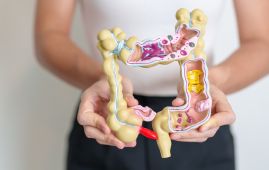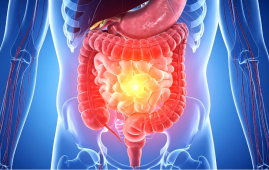

Lyme disease symptoms that persist after treatment- commonly referred to as Post-Treatment Lyme Disease (PTLD)—have long baffled both patients and healthcare providers. Now, new research from Northwestern University has uncovered a likely cause: persistent fragments of Borrelia burgdorferi‘s peptidoglycan, the structural component of bacterial cell walls. These remnants linger in the body long after antibiotic treatment and may trigger an ongoing immune response, potentially explaining chronic symptoms like fatigue, joint pain, and cognitive issues.
Post-Treatment Lyme Disease (PTLD): A Growing Concern
A 2022 study reported that 14% of patients treated early for Lyme disease still went on to develop PTLD. Symptoms like chronic fatigue, cognitive impairment, and arthritis often continue for weeks or months, despite completion of antibiotic therapy. Until now, the reasons for this were unclear.
Northwestern Scientists Identify Key Molecular Clue
New findings suggest that the peptidoglycan from the Lyme-causing bacteria remains in the body post-treatment and may stimulate the immune system unnecessarily. This process mimics long COVID-19, where lingering viral fragments provoke an ongoing inflammatory response.
Why Lyme Disease Peptidoglycan Persists in the Body
Unlike typical bacterial infections where cell wall fragments clear quickly, Borrelia burgdorferi’s peptidoglycan persists for an unusually long time. The study showed this unique molecule resists breakdown in the liver, making it a likely trigger for continued immune activity.
Implications for Lyme Arthritis and Treatment Options
In cases of Lyme arthritis, even after antibiotics fail, patients show improvement with anti-inflammatory treatments like disease-modifying antirheumatic drugs (DMARDs). This points to the immune system’s maladaptive response rather than an active infection.
Peptidoglycan’s Unique Structure May Hold the Key
What sets Borrelia peptidoglycan apart is its unique structure, shaped by its tick vector and inability to be easily processed by the body. This feature could be critical in developing new diagnostic tests and treatment strategies for PTLD.
Future of PTLD Diagnosis and Treatment
Lead researcher Dr. Brandon L. Jutras suggests that targeting peptidoglycan, rather than the bacteria itself, might be the future of Lyme disease care. Experimental therapies include monoclonal antibodies aimed at neutralizing these lingering molecules.
For more information: Karimi M, Asbaghi O, Hooshmand F, et al. Adherence to Mediterranean Diet and Breast Cancer Risk: A Meta‐Analysis of Prospective Observational Studies. Health Science Reports, 2025, DOI: 10.1002/hsr2.70736, https://onlinelibrary.wiley.com/doi/10.1002/hsr2.70736
more recommended stories
 36-Week Pre-eclampsia Screening May Reduce Term Risk
36-Week Pre-eclampsia Screening May Reduce Term RiskA New Preventive Strategy for Term.
 Cardiovascular Risk and Sudden Cardiac Death in Diabetes
Cardiovascular Risk and Sudden Cardiac Death in DiabetesRising Sudden Cardiac Death (SCD) Risk.
 Poor Kidney Function and Alzheimer’s Biomarkers Explained
Poor Kidney Function and Alzheimer’s Biomarkers ExplainedPoor kidney function may influence levels.
 Walking Speed Before Hip Replacement Predicts Recovery
Walking Speed Before Hip Replacement Predicts RecoveryNew Evidence Points to a Simple,.
 Neuroblastoma Drug Combo Extends Survival in Models
Neuroblastoma Drug Combo Extends Survival in ModelsA Promising Shift in High-Risk Neuroblastoma.
 How Soybean Oil Impacts Weight Gain and Metabolism
How Soybean Oil Impacts Weight Gain and MetabolismWhy Soybean Oil May Affect Metabolism.
 Coffee and Cognitive Function: Evidence Review
Coffee and Cognitive Function: Evidence ReviewA new narrative review in Cureus.
 Colorectal Cancer Screening Rates Low in Adults 45–49
Colorectal Cancer Screening Rates Low in Adults 45–49Recent UCLA research reveals that colorectal.
 Gut Immune Cells and Long-Lasting Antiviral Protection.
Gut Immune Cells and Long-Lasting Antiviral Protection.Breakthrough Findings on How Gut Immune.
 Mild Pancreatic Duct Dilatation Signals Higher Cancer Risk
Mild Pancreatic Duct Dilatation Signals Higher Cancer RiskEarly Structural Changes Offer Critical Clues.

Leave a Comment